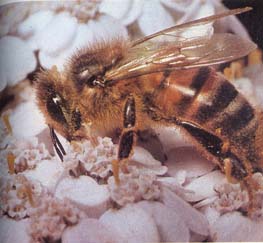Brenda Helleberg
Burncoat
High School
Worcester,
MA
Horticulture/
Agriculture
Bees are insects of the Order Hymenoptera which feed on pollen and nectar. They constitute a group of about 20 000 species throughout the world. Honeybees serve as the primary pollinators for the Himalayan ecosystem. There are four main species in this region: Apis cerana, Apis mellifora, Apis dorsata, and Apis flora.
There has been a decline in bees in the Himalayas that is having a dramatic impact on the ecosystem plants that are dependant on them for pollination. There are several aspects to this problem and the variety of solutions that are being used to help stabilize the populations.
First of all it is important to be aware of a traditional practice of honey harvesting from the cliffs in Nepal. This practice has been written about and filmed and is now a tourism attraction to this area. Through education and awareness this tradition will hopefully be saved through the use of sustainable harvesting practices.
Deforestation in the areas and heavy foraging has also decreased plant
materials available to the bees. Once again education and sustainable
practices are helping in the effort to save the bees.
 |
 |
This site was created by Brenda Helleberg at the NEH Summer Institute "Cultures and Religions of the Himalayan Region," held at the College of the Holy Cross, Summer 2004